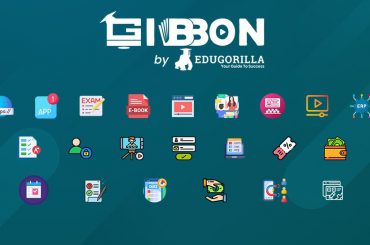Proctored tests are timed exams that you take while proctoring software watches your computer’s desktop as well as camera video and audio. The proctoring software collects data, which is then transferred to a proctoring service for analysis. Your course and enrolment track may or may not necessitate online proctored examinations.

So, in essence, an online proctored test is the same as any other exam, except that it is supported by an online infrastructure. Most importantly, invigilation is essential to ensure the purity of the exam room.
Typically, a cloud-based system powers the whole infrastructure. Although some older businesses still rely on legacy systems, it’s difficult to see how online proctoring would function without a cloud-based solution, given the global development of e-learning.
We attempted to depict the overall appearance of the online proctored tests. It also informs you of your obligations as an exam authority and how to prepare your examinees for online proctored tests.
How does Online Proctoring Work?
Students install software on their laptops for a standard remote proctoring system. The program accesses the student’s PC and camera when the evaluation begins. The student validates his or her identification by showing an ID to the camera or by other types of identity verification, such as biometric authentication, which includes face recognition.
In certain circumstances, a password known only to the proctor is required to begin the assessment, which necessitates the proctor to take control of the student’s computer to input the password. To block pupils from accessing web browsers or other programs, a lockdown mechanism may be implemented.
During the examination, the camera records the test and, in certain systems, feeds the footage in real-time to a human proctor who observes student eye movements and other behaviours for evidence of cheating and compiles a report after testing. On other occasions, the software may detect student behaviour that may imply cheating, and these instances can be evaluated later by faculty.

Step By Step Working of Online Proctoring Exams
Here’s a brief rundown of how an online proctored exam begins.
- To begin, the candidate must complete all areas, including name, date of birth, age, and gender.
- The authorization page follows when the test-taker gives the online proctoring system control by permitting them to share their screen, video, and audio.
- They must then present sufficient identification. This is certified either by a face recognition tool or by manual proctors who are accessible 24 hours a day, 7 days a week, and who compare each applicant’s photo ID to the previously supplied registration information to ensure their validity.
- When all requests are enabled and accepted, the applicant is ready to be proctored, and the exam proctoring procedure begins.
- While the test-taker is writing the exam, the proctor is monitoring all of the applicants via the camera in a grid view, as well as observing their tabs in another window.
- Some exam proctoring sessions will additionally include a chat box (located in the bottom right corner of the window) for any additional information to or from the examinee. When any suspect candidate movement is detected, the proctor is alerted. Before making a decision, it uses the live chat function to connect with students and soothe their concerns.
- When the timer expires, the online proctored exam is scored and the results are automatically submitted. The candidate is given extensive feedback on their performance, question by question and section by section.
Types of Online Proctoring
Live Proctoring
Live proctoring is similar to being in a classroom. Except that an online proctor supervises numerous examinees remotely from start to finish, using a real-time audio and video stream.
Auto Proctoring
It is a more sophisticated type of web proctored test that is AI-enabled, automated, and aids in the administration of online exams without the need for human interaction.
Recorded Proctoring
It is an AI-enabled webcam proctored test in which the students’ screens and audio-video feeds are captured during the test without any real-time supervision.
Significance of Online Proctored Exam
Although a committed cheater can typically find a method to circumvent any system, online proctoring solutions are effective enough to dissuade a significant proportion of wrongdoing. Online courses that do not provide a secure mode of evaluation may be judged untrustworthy by other learning environments or accreditors. Academic testing, whether in a classroom or online, should at the very least contain the capacity to authenticate the identity of students taking examinations.
Difference Between Proctored and Unproctored Exams
Consider appearing for a test but without having any supervision. Isn’t there a possibility of cheating? Not for everyone, but for some students, the lack of invigilators or supervisors would surely be an incentive to refer to course material, seek assistance from friends and family, or even search the internet for appropriate answers.
And if the exam’s impartiality is damaged, the results and assessment reports will be misleading, reflecting the students’ true talents and the institutions’ integrity incorrectly. As a result, it would undermine the spirit and efficiency with which certain virtuous students choose to take the tests. As a result, providing un-proctored examinations may have a negative impact on an institute’s credibility.
However, when online proctoring, test-takers are aware of cutting-edge technologies, and alert proctors continually monitor and evaluate their actions and activities. As a result, they are more conscious of their activities and strive not to deceive the system.
Future of Online Web Proctored Exams
Remote proctoring systems may become a standard feature of online courses due to their ability to ensure academic integrity in online settings. The current tendency is to improve the tools using artificial intelligence, namely through machine analysis of a student’s biometric reactions.
Smartwatches and fitness trackers can detect changes in pulse and temperature and send that information to proctoring software for analysis. Existing facial recognition, sound recognition, and keyboard analysis techniques will be enhanced to detect cheating using characteristics such as facial expression, head movement and posture, tone of voice, and typing rhythm.
ABOUT GIBBON
Gibbon is a Plug and Play solution offered by EduGorilla, for anyone with a skill to teach. Gibbon helps you to take your classes online and earn independently.
- Gibbon gives you the ability to conduct & record LIVE classes, host unlimited video courses, provide online mock tests, and conduct online tests with LIVE proctoring abilities.
- Gibbon also provides you ready-made content of 1600+ Competitive, Entrance, and Academic exams from around the country.
- Gibbon helps you reach out to more students online and get a complete marketing setup.
- We have helped more than 3000 Brands, 10000 Institutes, 20000 Teachers and 2 Crore Students, transform their education and future.
Gibbon stands for “Online-Ready Teachers for a Future-Ready India”.
To get started, book your free demo now.






